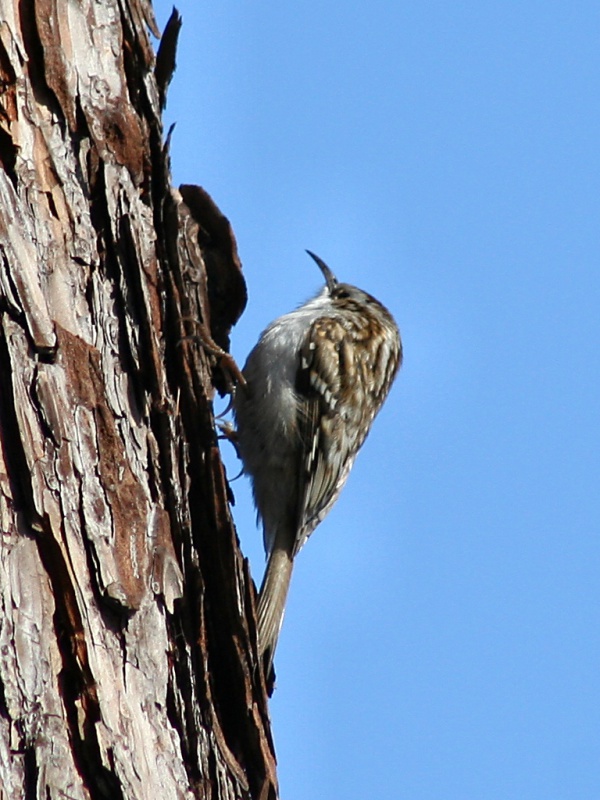Facts About Eurasian treecreeper
The Eurasian treecreeper, also known as the common treecreeper, is a small bird commonly found in woodlands across the Palearctic region. In the British Isles, it is the only representative of its genus. This diminutive bird is distinguished by its curved bill, brown patterned upperparts, whitish underparts, and long, stiff tail feathers that aid in climbing tree trunks. It primarily feeds on insects, which it finds by foraging on tree trunks. Its distinctive song helps differentiate it from similar species, such as the short-toed treecreeper.
There are at least nine subspecies of the Eurasian treecreeper, each inhabiting different parts of its range. They typically nest in tree crevices or behind flakes of bark, often showing a preference for giant sequoia trees. The female usually lays five to six eggs in a well-constructed nest. However, these nests and chicks are vulnerable to predators like woodpeckers and squirrels. Although the treecreeper primarily feeds on insects, it leads a solitary life in winter but sometimes forms communal roosts to stay warm.
In terms of appearance, the treecreeper has streaked and spotted brown upperparts, rufous rumps, and whitish underparts. It measures approximately 12.5 cm in length and is characterized by warm brown coloration on its upperparts. Its song is composed of a series of distinctive notes. The Eurasian treecreeper shares its range with other treecreeper species, making visual identification challenging. Various subspecies exist, and some may even be classified as separate species based on genetic and vocal studies.
This bird is generally non-migratory in milder climates but may move south during winter in colder regions. It breeds in temperate woodlands, favoring mature trees, and is commonly found throughout much of its range. The species is not considered at risk, thanks to its large population and wide distribution. Occasionally, it has been observed as a vagrant outside its usual range.
